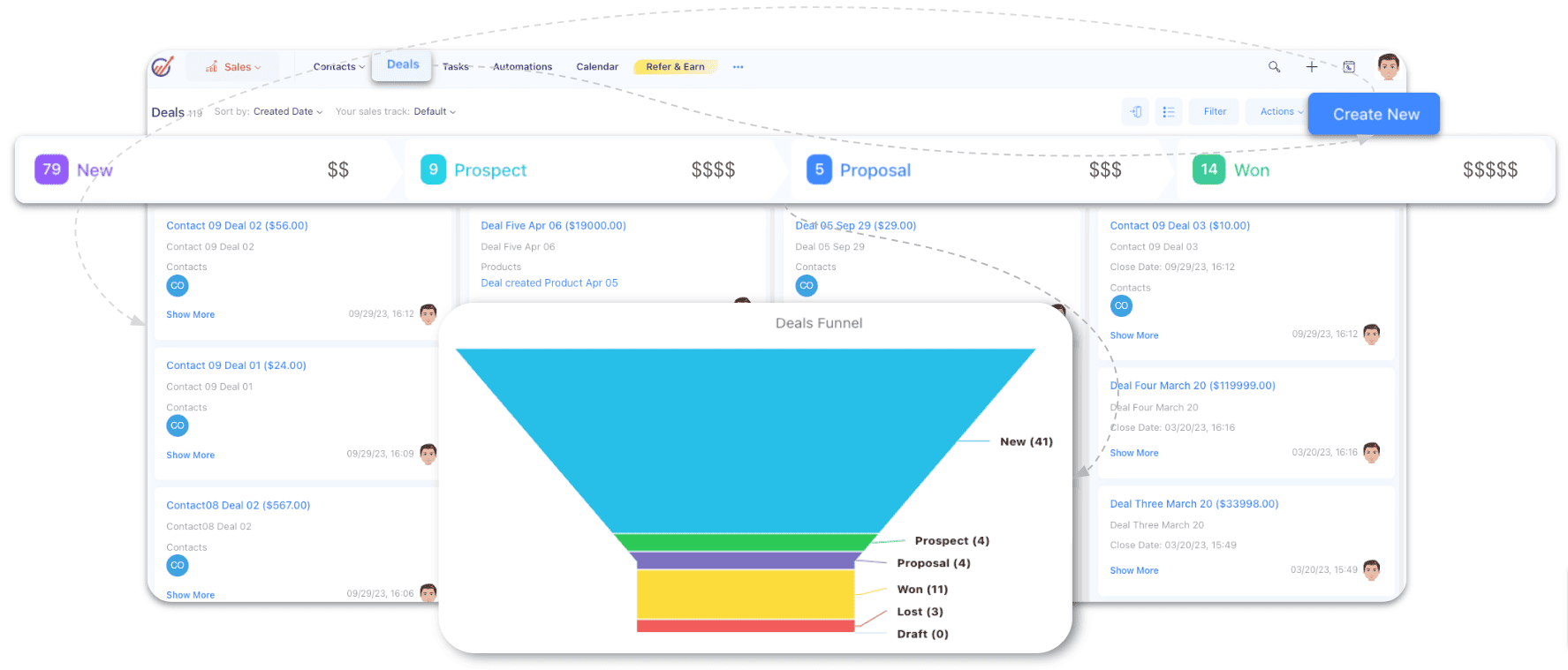Expert business strategists and owners know the enormous benefits of implementing an omnichannel retail strategy.
However, if you are new to the retail industry and still considering if there are any merits to omnichannel retail, the following statistics will point you in the right direction:
- Omnichannel retail strategies drive an 80% higher rate of incremental store visits (Think with Google)
- Purchase frequency is 250% higher on omnichannel vs single-channel (Omnisend)
- On average, companies with omnichannel retail strategy retain 9-in-10 of their customers (Softtec)
- Retailers without omnichannel customer experience miss out on up to 30% of sales (IWD)
- Marketing campaigns with at least three channels have 494% higher order rates (Omnisend)
These statistics show that adopting an omnichannel retail strategy is a key success factor in boosting customer loyalty, increasing sales, and ensuring a consistent customer experience in today’s retail environment.
So, if you want to know how to build a successful omnichannel retail experience in 2024, you’ve come to the right place.
In this blog post, we will discuss the following:
- How to implement a successful omnichannel retail strategy
- Omnichannel retail case studies
- Key benefits of a successful omnichannel retail strategy
- Challenges in the omnichannel retail world (with solutions)
Ready? Let’s go!
Table of Contents
Key Takeaways
- Omnichannel retail has become necessary because customers shop through various channels online and offline.
- Omnichannel marketing aims to create a seamless customer experience across various sales channels.
- Building an omnichannel retail strategy involves understanding your target audience and grouping them into various groups based on their unique characteristics. It also involves understanding the customer’s journey and looking for ways to provide a seamless experience across all touchpoints.
- Technology can improve customer experience throughout their shopping journey. Common technologies to integrate into your strategy include POS systems, CRM tools, AI, AR, and IoT.
What is an Omnichannel Retail Strategy?
An omnichannel retail strategy is a customer-centric approach in marketing that involves optimizing customer touchpoints with a business to ensure a seamless and consistent brand experience.
When purchasing, customers expect to be able to interact with businesses through online and offline touchpoints. This approach helps customers avoid certain limitations in each channel and enjoy the best of both worlds.
For example, a customer may visit your brick-and-mortar stores after seeing an ad or marketing campaign offering discounts on social media platforms. This unified experience gives customers a seamless shopping experience and boosts customer loyalty, in-store or online.
When business owners adopt this omnichannel business model, they help customers take the next logical step in their journey, facilitating a seamless move from one step of the sales funnel to the next.
Read also: The Top 12 Omnichannel Marketing Automation Platforms
Key Benefits of Omnichannel Retailing
Developing and executing an omnichannel retail marketing strategy can be very challenging.
However, it offers many benefits that make the effort worthwhile. Below are three key benefits of a successful omnichannel retail marketing strategy.
Better customer experience and satisfaction
Omnichannel retailing integrates multiple channels seamlessly, allowing customers to interact with the business through their preferred channels.
This integration ensures a consistent and seamless shopping experience across all touchpoints, increasing customer engagement and satisfaction. For instance, a small boutique may offer online shopping, in-store pickups, and personalized recommendations through emails, catering to different customer preferences.
Increased sales and customer retention
Small businesses can increase sales and improve customer retention by providing an omnichannel retail experience.
For example, a local bakery that allows customers to order online, purchase in-store, or even subscribe to regular deliveries will capture more sales and retain customers who appreciate the flexibility and convenience of cross-channel customer support.
Improved inventory visibility and logistics
Omnichannel commerce often involves integrating inventory systems across different sales channels.
This integration helps small businesses manage inventory better, reducing stockouts and overstock situations.
For instance, a small electronics retailer that synchronizes inventory levels between its physical store and online marketplace can fulfill orders more efficiently and avoid disappointed customers due to out-of-stock items.
Read also: How To Nail Your Retail Marketing Automation [Tools, Examples]
Omnichannel Retail Case Studies
Here are three case studies on omnichannel marketing strategies from different businesses:
Starbucks
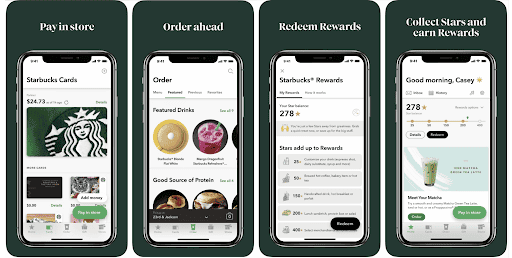
Starbucks has mastered the art of omnichannel marketing by ensuring a consistent and interconnected omnichannel customer journey across its mobile app, loyalty program, in-store experience, and online ordering systems.
Using the mobile app, customers shopping online can order from their mobile device, customize their drinks, and earn rewards, which they can redeem online and offline. This personalized shopping experience keeps customers engaged, reducing their chances of trying another brand.
IKEA
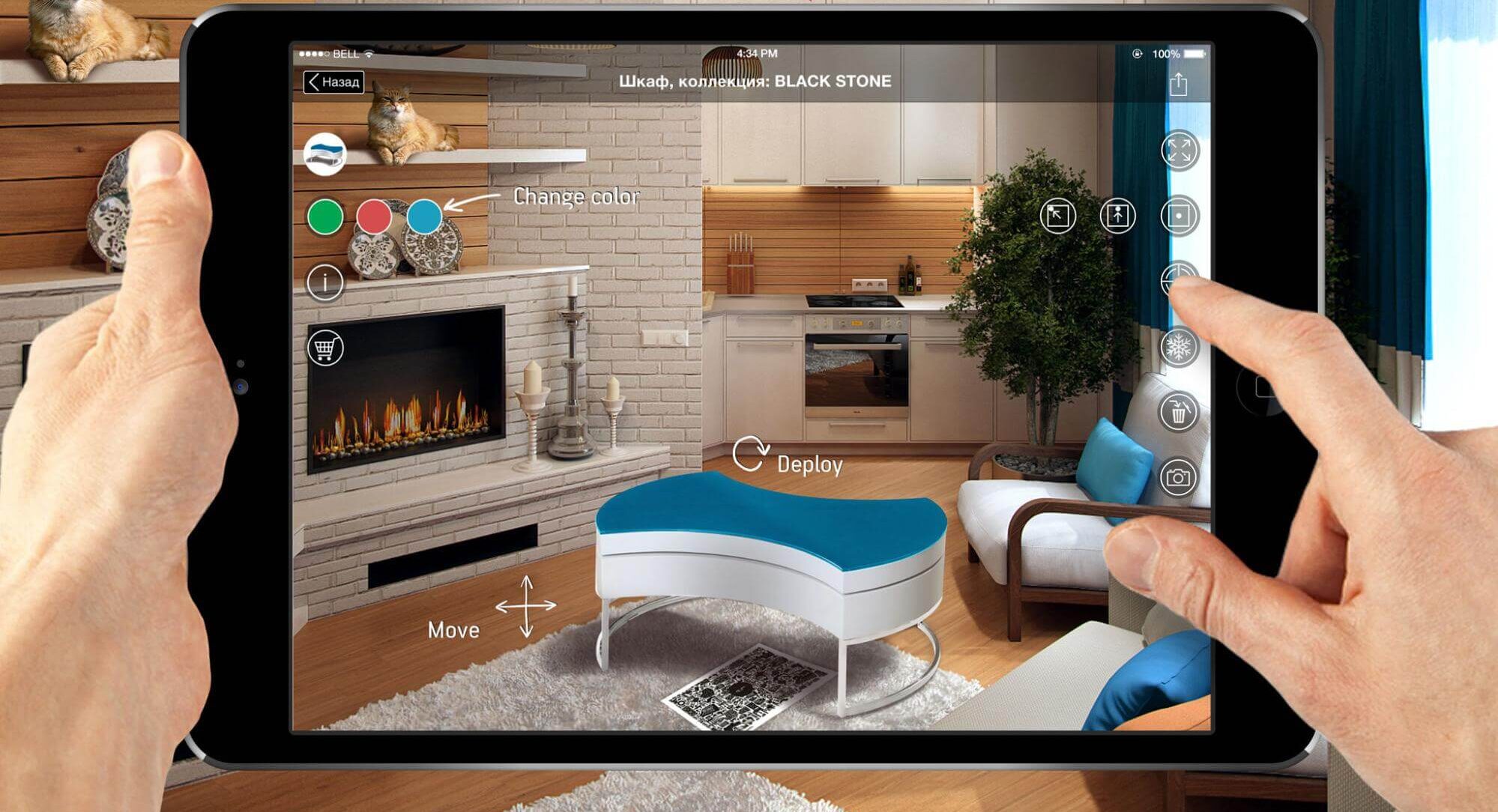
As part of its omnichannel strategy, IKEA uses augmented reality (AR) to provide a personalized customer experience. The IKEA Place app lets customers virtually place furniture in their homes before purchasing. This way, customers know exactly what they want without going through the hassle of in-store shopping.
By incorporating AR, IKEA provides an immersive and interactive shopping experience that aligns with its brand’s innovative image and meets modern consumer expectations for convenience and personalization.
Target
Target has effectively utilized omnichannel marketing by collaborating with Shipt to provide same-day delivery services. This partnership allows customers to shop online and receive their orders within hours, reducing the wait time typically associated with online purchases or the stress of walking into a brick-and-mortar location.
Additionally, Target’s robust mobile app and in-store pickup options provide customers with flexible shopping choices, ensuring a smooth and efficient process.
This strategy enhances customer satisfaction and increases sales by offering multiple convenient shopping ways.
Read also: All the Basics of Omnichannel Marketing (+Examples, Tips)
How to Build a Successful Omnichannel Retail Strategy
An omnichannel marketing strategy is customer-centric.
That means that no two methods are the same. Rather, all strategies must be designed to fit your unique customer base. This is easier said than done, as developing an omnichannel marketing strategy involves several ‘pieces’ that must be well-arranged to complete the ‘puzzle.’
Before we discuss how to build an effective omnichannel strategy, let’s first discuss the different components of an omnichannel marketing approach.
Below are the different components that make up an Omnichannel marketing strategy:
Cross-channel integration
This is the most crucial component of an omnichannel approach.
It involves factoring in the channels through which your target audience interacts with your brand throughout their customer journey. The ultimate goal of cross-channel integration is to ensure a consistently good customer experience across different channels.
Mobile optimization
Mobile sales made up 60% of all eCommerce sales in 2023 and are projected to increase by over 16% in 2024.
This rise in mobile commerce can be attributed to its convenience when purchasing. Since omnichannel retail trends aim to improve customer experience, you must optimize all channels for mobile devices.
Result analysis
Much of omnichannel marketing’s success depends on measuring and analyzing results.
You must constantly evaluate your marketing results and identify hitches to be effective. Then, you must consistently optimize each touchpoint to ensure a seamless customer experience across various channels.
Leveraging the right data
Omnichannel marketing involves several channels and so offers a large amount of data for marketers to work with.
However, not all data are equal; some are more important. Prioritizing the most valuable data helps you improve the customer journey, resulting in more sales and customer loyalty.
Seamless customer experience
Your target audience interacts with your brand through different online and offline channels.
An omnichannel marketing approach aims to ensure they can quickly move seamlessly from one channel to another as they progress through the customer journey.
Now that we have discussed the components of an omnichannel marketing approach, let us discuss the steps to build an omnichannel retail experience.
Read also: Multichannel Retailing: Everything You Need to Know
7 Steps to Build an Omnichannel Marketing Strategy
Follow these steps to build a successful omnichannel marketing strategy.
1. Know the platforms your audience prefers
While there are several channels through which customers and businesses interact, not all are worth investing in.
The platforms to prioritize are those where your customers are and where you make the most sales. This second consideration is indispensable for small businesses with limited marketing budgets.
You must also know how your customers interact with these channels and their preferences, experiences, and pain points.
But how do you know which platforms your audience prefers? It is simple.
Suppose you already have a customer base visiting your website.
In that case, you can use Google Analytics ‘acquisition reports feature to find the multi-channel funnels attracting the most customers. This information can serve as a foundation for your omnichannel marketing strategy.
However, if you are starting, you can analyze your competitors to see where most of their customers come from.
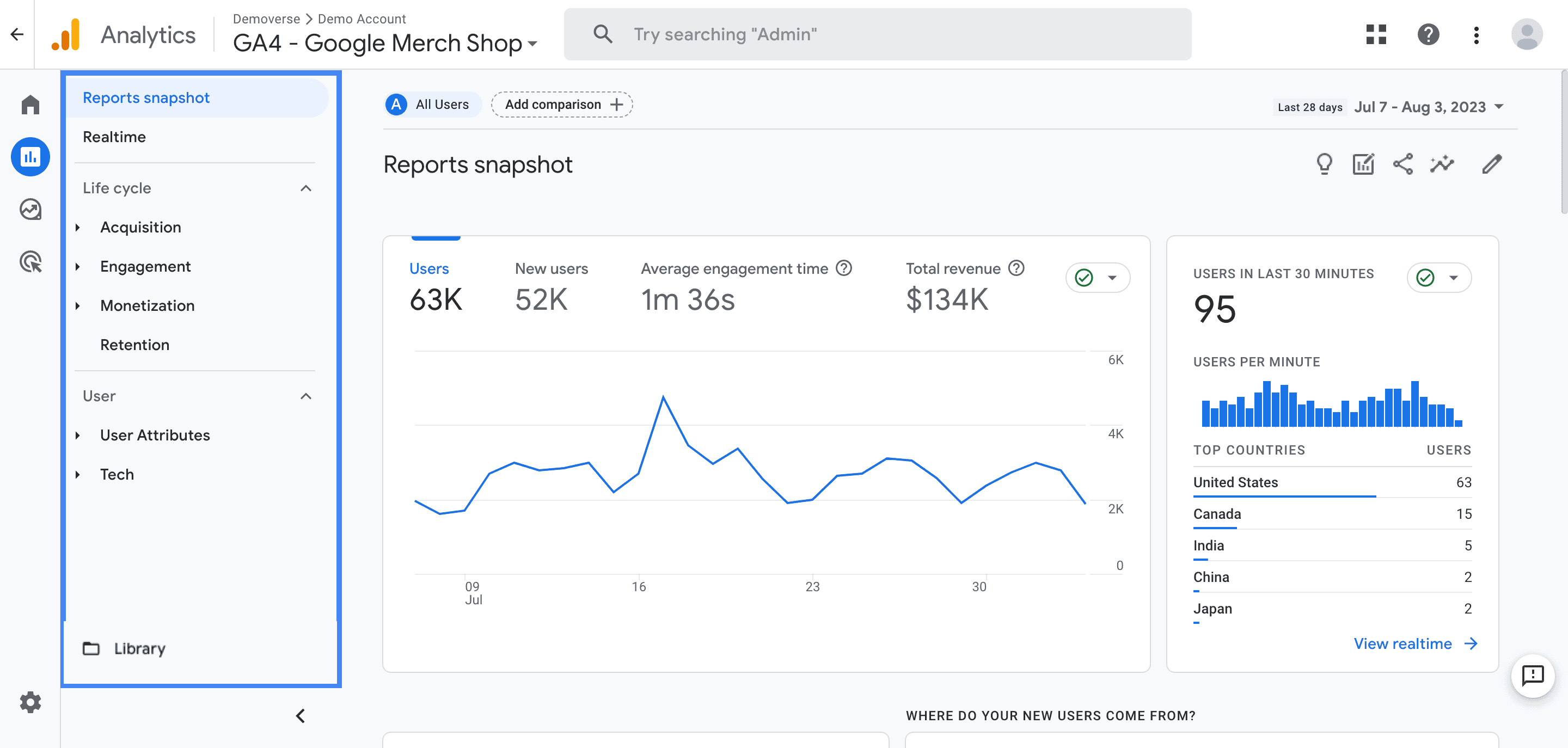
2. Create a buyer persona
As mentioned earlier, omnichannel marketing involves tailoring your marketing to the unique characteristics of your audience.
But how do you know your audience if you are starting or planning a future marketing campaign?
The answer lies in creating a detailed buyer persona.
A buyer persona is a profile developed from thorough research representing a target audience. An ideal buyer persona should include demographics, geographics, psychographics, behavioral characteristics, and the preferred mode of communication. It should also include the finer details such as purchase frequency, payment, channel, type of device, mode of purchase, etc.
When creating a buyer persona, it is essential to understand that your products may appeal to multiple customers. For example, an insurance company may have customers with various characteristics and needs within their target audience.
To optimize your marketing strategy, you may need to create multiple buyer personas based on the different characteristics of your target audience. This will require the collaborative effort of your marketing and sales team.
Finally, when creating a buyer persona, you must consider the target audience segment’s customer lifetime value (CLV).
After all, the ultimate goal of any marketing strategy is improved sales. Based on this reasoning, trying to convert customers who will not bring in profit wouldn’t make sense.
3. Group your audience into segments
Now that you clearly understand your target audience, what they want, and their unique characteristics, the next phase is categorizing them into groups. This process is known as segmentation.
But why is segmentation important?
Because customers react better to brand messages that incorporate personalized marketing.
While segmentation is still helpful for small businesses, big businesses with a wide range of products have more to gain from segmenting their customers into groups based on shared attributes.
Grouping your audience into different audiences allows you to market specific products and services to each group based on their unique characteristics and interactions with your brand.
Research has shown that offering particular products to your customer segments can improve conversion rates and brand loyalty.
4. Map your customer journey
Now that you have your different segments, the next step is to map the customer journey from awareness to the experience phase.
This involves identifying key touch points during the buyer journey and optimizing them to improve conversion from one level of the sales funnel to the other.
Identifying key touch points within a customer journey is a complex effort that requires the collaborative effort of your marketing, sales, and customer support teams.
To effectively identify these touchpoints, you must put yourself in the customer’s shoes and imagine the various channels through which they can contact your brand marketing as they move through the different sales funnel levels.
You must seek to understand the hitches they may encounter when moving through the different stages of the buyer journey and optimize touchpoints to ensure a seamless transition.
5. Create seamless integration across all channels
So far, you have acquired an in-depth knowledge of your target audience, their preferred channels, and their buyer journey.
The next step is to connect all the touchpoints to ensure seamless integration across all channels. This is the glue that holds every component of your Omnichannel marketing together. If you fail to connect the different channels, you are setting up your Omnichannel marketing strategy for failure.
To create a seamless integration across all channels, you must track your customers and their shopping experience across different channels. You must identify how your customers progress from one touch point to another and enhance these connections using appropriate technology and personalized marketing offers.
6. Improve customer support
As your target audience becomes aware of your brand, they will have questions to ask regarding your products and services.
This is true across the different stages of the buyer journey. The efficiency of your customer support system will determine the effectiveness of your multichannel marketing strategy.
Are you still in doubt?
Let us look at the statistics:
- More than 60% of customers say they will switch to a different brand after one bad experience with customer support.
- Almost 80% of customers indicate that they will do business with another brand if they experience more than one negative encounter with customer support (Helpscout).
- A business is 2.4 times more likely to retain customers if problems are solved promptly (Startups).
- 96% of customers choose brands based on the quality of their customer service (Influx).
- More than 60% of companies report higher revenues due to improved customer support (Helpscout).
Customer support is a big deal, and an omnichannel marketing strategy must integrate efficient customer support across all channels.
This translates to consistent, responsive, and effective customer support across different platforms.
7. Evaluate your performance
When building an omnichannel marketing strategy, it is important to set Key Performance Indicators (KPIs) to evaluate its success.
While evaluating success can be arduous for any marketing strategy, omnichannel marketing offers a new challenge. Omnichannel marketing, as a comprehensive approach, involves several communication channels, making analysis even more difficult.
Thankfully, several tools out there can help analyze all the cross-channel data.
The purpose of evaluating your performance goes beyond measuring success. Assessing your performance should open your eyes to areas of your marketing strategy that could perform better. You can improve customer satisfaction and sales across all channels by continually improving in these areas.
Use of Technology in Omnichannel Retail
The chief purpose of Omnichannel marketing is to provide a seamless customer experience across all channels. This is a creed for all marketers utilizing the omnichannel marketing strategy.
In line with this, every technology integrated into your marketing strategy must optimize the customer experience as they move through the different sales funnel levels.
Here are some technologies you can integrate into your marketing strategy to provide a hitchless customer experience across various channels.
Point of sale system
The point of sale is a transaction between a merchant and a customer. In a physical store, the end of the sale is the cash register, while an online store is the payment platform.
The efficiency of your POS system can significantly affect how customers perceive your brand. Research has shown that customers are more likely to repeat purchases from a brand that offers seamless payment options and to refer to a brand if they enjoy a seamless payment process.
Therefore, when setting up an omnichannel strategy, the ease of payment should be a top priority. You should select payment systems that have the following characteristics:
Unified customer experience
Omnichannel marketing aims to provide a consistent and integrated experience across all channels. Integrating with other sales channels, a POS system synchronizes customer data, purchase history, and preferences.
This allows customers to have a seamless experience whether they shop online, via mobile apps, or in physical stores.
Inventory management
A POS system integrated with other channels helps you monitor what is in your store in real time.
This prevents stockouts and ensures that customers can buy the products they need when they visit your brick-and-mortar store or shop online.
Data analytics
A POS system can help you learn more about your customers’ behavior, preferences, and shopping habits.
The data you collect from your POS system complements those from other channels and helps you better understand your customers. With this detailed understanding of your customers, you can personalize marketing, improve your products, and optimize your customers’ journey across all touchpoints.
Operational efficiency
Integrating POS systems with other sales channels makes operational processes such as order fulfillment, returns, and customer support much easier.
This improves efficiency and reduces friction in the customer experience, leading to higher satisfaction and retention rates.
Customer relationship management tools
CRM stands for Customer Relationship Management.
It refers to all the strategies, practices, and technologies that you can use to manage and analyze interactions with your customers (both current and potential) throughout their lifecycle.
Examples of CRM retail tools include EngageBay, Salesforce, HubSpot, and Zoho CRM, which offer various features for managing customer interactions and data. A great CRM tool should facilitate omnichannel marketing by enabling businesses to cohesively integrate and leverage various channels.
Here’s how.
Unified customer view
CRM tools should centralize customer data from multiple channels (online, offline, mobile, and social media) into a single view.
This allows you to understand what your customers want, their behaviors, and how they interact with your brand across different touchpoints. Additionally, it ensures a consistent experience regardless of how customers engage.
Cross-channel communication
A CRM tool should facilitate communication across various channels.
This way, you can engage more with your customers through personalized messages, promotions, and offers. This capability ensures that marketing efforts are coordinated and useful throughout the different phases of the customer journey.
Integrated campaign management
A great CRM tool should facilitate creating and managing omnichannel marketing campaigns.
It should also allow businesses to plan, execute, and track campaigns from different channels on a centralized platform. This includes email marketing, social media campaigns, personalized recommendations, and targeted advertising.
Real-time data synchronization
The CRM tool should offer real-time synchronization of customer data across channels.
This ensures that updates or interactions (such as purchases, inquiries, or feedback) are reflected immediately across all integrated systems, providing a seamless and up-to-date customer experience.
Analytics and insights
Robust analytics capabilities are essential for optimizing omnichannel marketing strategies.
A good CRM tool should make it easy to understand complex data on customer behavior and purchasing habits across different channels. With these insights, you can adjust your marketing strategies and budget more effectively.
Customer service integration
A good CRM tool should make supporting your customers throughout their purchasing journey easy.
With CRM tools, your customer support team can access useful information about your customers and previous interactions across channels, making it easier for them to provide personalized and efficient support.
Emerging technologies used in omnichannel marketing
Beyond the tools mentioned above, you can adopt these new technologies to give your customers a better experience with your brand.
Artificial intelligence
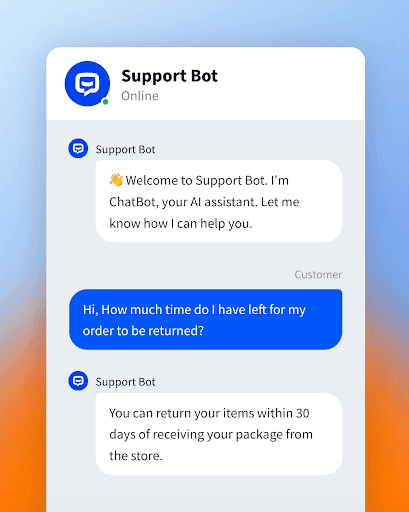
You can integrate AI into every part of your marketing strategy, including customer support.
With AI, you can offer your customers great customer support and reduce the need for a large team. Ultimately, using AI for customer support enhances the customer experience and saves money.
Augmented reality
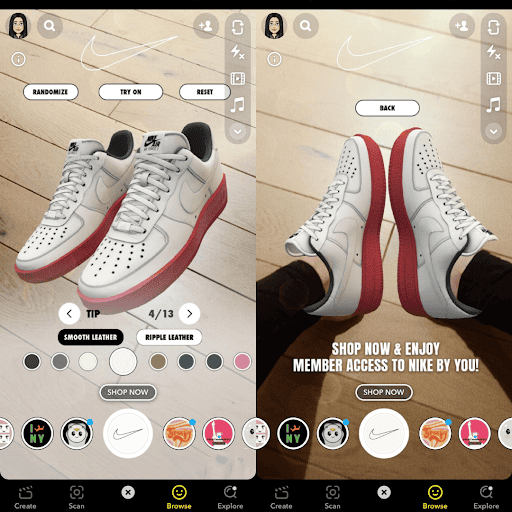
AR has significantly impacted how we shop for products online. Today, with the help of AR, you can get a feel of a product from the comfort of your home to see if you would like it before committing to buying it.
Some examples of businesses using AR include Converse, allowing customers to try on shoes virtually. Ray Bans also did something similar in collaboration with Snapchat.
Challenges of Adopting Omnichannel Retailing and Practical Solutions
In the preceding sections of this article, we have discussed the benefits of adopting an Omnichannel retail strategy.
To give a balanced picture, we must also discuss the challenges of adopting this marketing approach. But we won’t stop there; we will discuss solutions to these challenges. The goal is to help you take preemptive steps to deal with these challenges before they become too costly.
You can find some of the challenges and their solutions below.
Poor content approach
The effectiveness of an omnichannel marketing strategy depends heavily on content. A poor content strategy will inevitably lead to the downfall of your campaign.
Your target audience engages with your brand across various channels, including social media, mobile apps, websites, and more. Additionally, they correspond to multiple phases of the buyer’s journey.
If you choose a “spray and pray” strategy, some user segments won’t find your material relevant, which could result in you losing out to the competition.
Solution
In a poll by MIG and OneSpot, 78% of US consumers attested that relevant information boosts their propensity to buy a brand’s goods and services.
To improve the quality of your content, especially for social commerce, create content based on the unique characteristics of the different segments. Consider the various touch points as they move through the buyer’s journey, and create content that helps to improve their overall experience.
Developing a content strategy that caters to these unique segments requires thorough research and understanding of your audience.
Use data analytics to identify trends and preferences among different customer groups.
Craft personalized messages that resonate with their specific needs and interests, whether through targeted email campaigns, social media posts, or website content.
By continuously refining your content strategy based on real-time feedback and engagement metrics, you can ensure that your messaging remains relevant and compelling, ultimately driving higher engagement and conversion rates.
Poor data tracking
Businesses offering omnichannel marketing usually suffer from the ‘last-touch attribution model.’
This means they assign credit to the final touch point a customer interacts with before making a purchase instead of considering all the touchpoints with which the customer interacts.
For example, a customer might come across a YouTube ad, visit the company’s website, speak to a customer support representative about a product’s features, and then purchase the product after receiving a personalized email with a discount.
The last-touch attribution model will assign credit to personalized emails instead of considering all the touchpoints that led to sales. This is erroneous and can lead to a business focusing on one touchpoint instead of all the touchpoints that led to the sale.
Solution
Businesses adopting omnichannel marketing should implement an attribution model that tracks and assigns values to all channels throughout the customer journey.
This involves using analytics and advanced algorithms to understand how each channel contributes to sales.
Poor execution of insight from analysis
The success of an omnichannel marketing strategy depends on collecting and analyzing data to understand obstacles to a smooth customer experience.
However, if marketers cannot adapt their strategy based on the insights gleaned from data, the data collection and analysis goal is defeated. This is the case for many marketers who adopt an omnichannel approach.
According to a CMO Council and RedPoint Global survey, most marketers need to learn how to adapt insights from existing data to create a better customer experience.
Additionally, this survey shows that fewer than 5% of marketers believe their marketing strategy aligns with the available data.
This is an alarming reality, as collecting and analyzing data on customer behavior requires a lot of resources and effort. Having it go to waste because actionable steps are not taken is wasteful and can lead to the collapse of the entire marketing strategy.
Solution
The best way to fix this problem is to employ marketers and other related professionals with the necessary skills to optimize the data available about users.
Maintaining brand consistency
The importance of branding in today’s business world must be emphasized; consistent branding sets you apart in a competitive business climate.
The struggle to maintain a consistent brand is mainly present in an omnichannel marketing approach. This is because customers interact with your brands through various channels online and offline.
Consistent branding sets you apart and helps you maintain professionalism, which is necessary to build trust and customer loyalty.
When brand elements, such as colors, fonts, etc., are inconsistent across various channels, customers may find it hard to trust you.
Solution
Marketers must adhere to comprehensive brand guidelines to maintain consistency across various channels.
These guidelines should encompass all brand elements, including logos, colors, fonts, tone of voice, and messaging. By doing so, they create a cohesive brand identity that can be consistently applied across all platforms, from social media and email campaigns to in-store displays and online advertisements.
Ensuring that every piece of content aligns with these guidelines will reinforce the brand’s image and build trust with customers, as they will recognize and appreciate the uniformity in how the brand presents itself.
In addition to developing robust brand guidelines, marketers should invest in technology and platforms that facilitate customization and ensure consistency.
Utilizing advanced marketing tools and software can help streamline the process of managing brand assets, making it easier to maintain uniformity across different channels.
These platforms can provide centralized repositories for brand materials, automated content management systems, and collaborative tools that allow teams to work together seamlessly.
Future Trends in Omnichannel Retail
Omnichannel retail strategies continuously evolve to meet changing consumer behaviors and technological advancements.
Here are some predictions on how these strategies may grow in the future.
Enhanced personalization
Retailers will increasingly use AI and machine learning to personalize the shopping experience across all channels. This means more tailored recommendations, promotions, and customer service.
Integration of Augmented Reality (AR) and Virtual Reality (VR)
AR and VR technologies will become more prevalent in retail, allowing customers to virtually try products before purchasing.
This can significantly enhance the online shopping experience and bridge the gap between digital and physical retail environments.
Expansion of voice commerce
With the rise of smart speakers and voice assistants, voice commerce will likely become more mainstream.
Retailers must optimize their omnichannel strategies to accommodate voice search and voice-based shopping experiences.
Seamless payment solutions
The future of payments will focus on frictionless transactions. Mobile payments, digital wallets, and other innovative payment solutions will be crucial in providing a seamless omnichannel experience.
How Can Small Businesses Prepare for Future Trends?
As it stands, the future of eCommerce will be dominated by emerging technologies and how they can affect or predict consumer behaviors.
With artificial intelligence, you can offer customers products that fit their needs. You can also use AI to help your customers understand your products more. Through the help of AI, your business can offer a better experience to your customers and keep them satisfied.
Another emerging technology that small businesses can adopt today to prepare for the future is IoT.
With IoT, you can improve your operations, offer customers products that meet their needs, and better manage your inventory and deliveries. Overall, IoT leads to business growth and innovations in eCommerce.
Finally, your business can use Blockchain to offer faster, cheaper, and more secure payments. You can also integrate Blockchain technology to secure your customers’ data and privacy.
Beyond adopting futuristic technologies, your business can better prepare for the future by investing in eCommerce.
Establishing a robust online presence with a user-friendly website and mobile app can better position them to cater to the growing number of digital shoppers. When small businesses adopt eCommerce and integrate it into already established offline marketing strategies, they are more prepared to offer a seamless experience to their customers.
Conclusion
Adopting an omnichannel marketing strategy involves taking preemptive steps to remove hitches to a seamless customer experience.
Therefore, you must use all the available resources, including customer data and tools, to get a sense of how customers interact with your brand. With the insights obtained, implement vital changes to your marketing and sales processes to ensure customer satisfaction.
EngageBay is an all-in-one marketing, sales, and customer support software for small businesses, startups, and solopreneurs. You get email marketing, marketing automation, landing page and email templates, segmentation and personalization, sales pipelines, live chat, and more.
Sign up for free with EngageBay or book a demo with our experts.
Frequently Asked Questions (FAQ)
1. What is omnichannel retail, and why is it important?
Omnichannel retail is a marketing approach that considers all the different online and offline channels customers use to interact with your business.
It helps to provide customers with a convenient, consistent, and personalized experience from the moment they learn about your business until they become loyal customers.
2. How can small businesses start implementing an omnichannel strategy?
The best way to implement an omnichannel marketing strategy as a small business owner is to start by understanding your customers.
This includes understanding what products they like and how they interact with your business to make a purchase. Once you clearly understand your customers, the next phase is to invest in a robust eCommerce platform that works seamlessly across different devices.
After this, connect your platform to a CRM tool to track customers’ interaction with your brand. Finally, use analytics to make data-driven decisions.
3. What are the must-have technologies for an effective omnichannel setup?
Technologies essential to an Omnichannel marketing strategy include an adaptive eCommerce platform, CRM software for managing customer interactions, an inventory management system, and analytics tools to gain insights into how your customers shop and the products they like.
4. How does omnichannel retail improve customer experience?
Omnichannel marketing allows customers to enjoy a better shopping experience by offering products that meet their needs and consistent messaging throughout their interaction with your brand.
But it doesn’t stop there. With Omnichannel retail, your customers can shop at their convenience and get their deliveries on time.
5. What future trends should small business owners watch in omnichannel retail?
Future trends that you should watch out for as a small business owner include AI-powered eCommerce. This will help you offer customers more personalized products and improve the quality of customer service automation. Also, Augmented Reality and Virtual Reality technologies.
These technologies will make it easier for customers to choose products that fit them without leaving the comfort of their homes.


